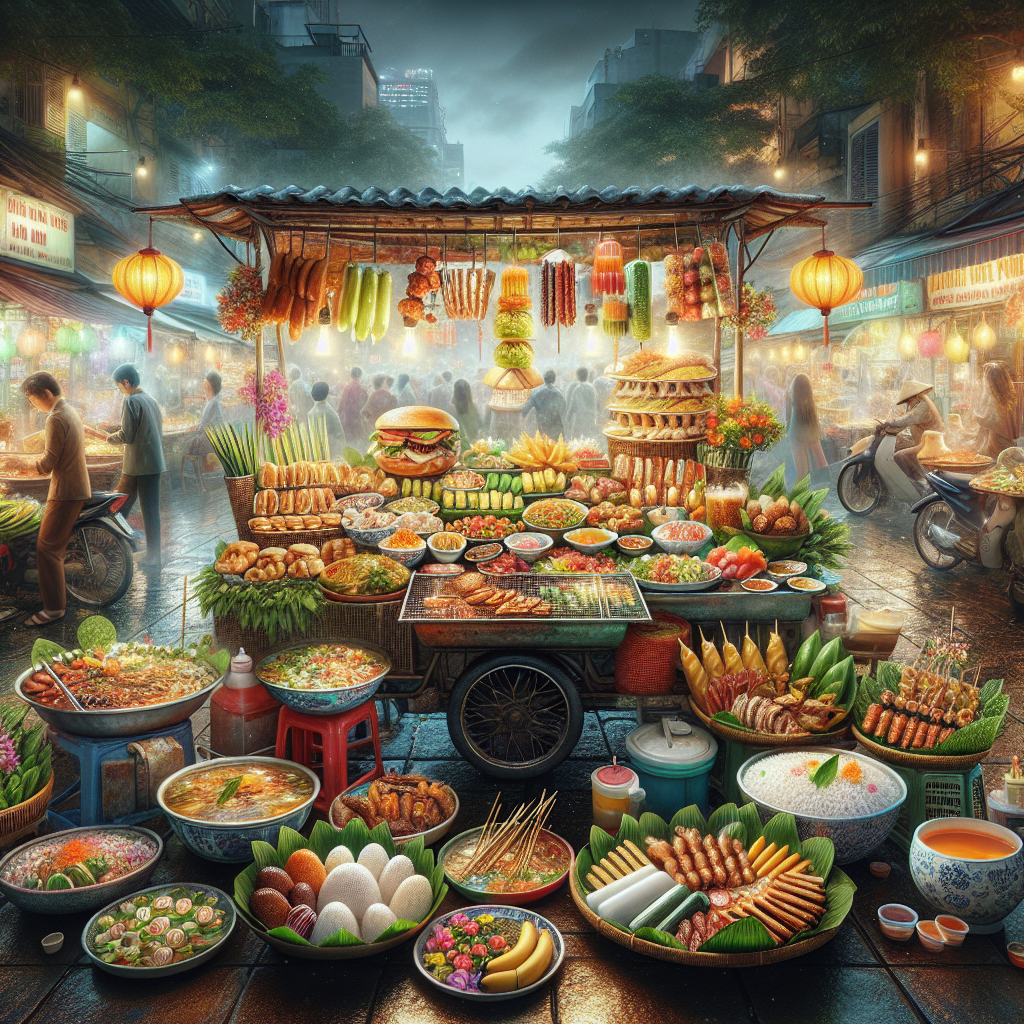A Foodie’s Paradise: Savoring Vietnam’s Street Food Delights
Vietnam, a country with a rich tapestry of cultures, traditions, and histories, is also home to one of the most vibrant street food scenes in the world. From the bustling streets of Hanoi to the vibrant alleyways of Ho Chi Minh City, Vietnam offers an endless array of mouth-watering delights that tantalize the taste buds and offer a window into the heart and soul of the country. A pilgrimage to this culinary paradise reveals not just the flavors but the spirit of Vietnam, making it a must-visit destination for foodies around the globe.
The Essence of Vietnamese Street Food
Vietnamese street food is much more than just eating; it’s an immersive experience. It’s about the sizzle of fresh ingredients on a hot grill, the aromatic herbs, the communal seating on tiny plastic stools, and the symphony of flavors in each bite. The essence of Vietnamese cuisine lies in its balance of five fundamental taste senses: spicy, sour, bitter, salty, and sweet, which correspond to five organs: gall bladder, small intestine, large intestine, stomach, and urinary bladder, respectively. This balance is thought to contribute to good health and is a principle that guides Vietnamese cooking.
The Must-Try Dishes
Pho: Perhaps the most iconic Vietnamese dish, Pho is a comforting bowl of broth, rice noodles, herbs, and meat – usually beef or chicken. It’s a breakfast staple but enjoyed at any time of the day.
Banh Mi: This Vietnamese sandwich is a fusion of French and Vietnamese cuisine. A crispy baguette filled with a variety of meats, pâté, mayonnaise, pickled vegetables, and coriander, each bite of Banh Mi is a flavor explosion.
Bun Cha: A Hanoi specialty, Bun Cha features grilled pork meatballs and slices served with a side of rice vermicelli noodles, herbs, and a dipping sauce.
Goi Cuon: Also known as Vietnamese spring rolls, these are fresh, not fried, and packed with greens, coriander, minced pork, shrimp, and wrapped in rice paper. They’re served with a peanut or fish sauce for dipping.
Cao Lau: Unique to Hoi An, Cao Lau consists of thick rice noodles, barbecued pork, crisp croutons, bean sprouts, lettuce, and herbs, all doused in a flavorful broth.
Street Coffee: Vietnam’s coffee culture is robust, with its signature being the strong, sweetened condensed milk coffee, both hot and iced. The coffee experience is integral to any street food tour, offering a caffeinated insight into the local way of life.
The Experience Beyond Taste
Eating street food in Vietnam is about embracing the culture. It’s about watching the world go by as you sit on a busy sidewalk, engaging with locals, and observing the meticulous preparation of each dish. The vibrant markets, the passionate vendors, and the sheer variety of dishes reflect the country’s rich history, regional differences, and the local ethos of fresh, simple ingredients creating complex flavors.
Sustainability and Street Food
As the world becomes more conscious of sustainability, Vietnamese street food stands out for its minimal use of plastic and reliance on fresh, locally sourced ingredients. Most street vendors serve food on reusable plates or banana leaves, with bamboo or wooden utensils. This approach not only enhances the flavor but also reduces the environmental footprint, making each meal a responsible pleasure.
FAQs
Q: Is street food in Vietnam safe to eat?
A: Yes, street food in Vietnam is generally safe to eat. It’s advisable to eat at busy stalls (a high turnover means food is fresh), check for cleanliness, and watch the food being prepared.
Q: Can I find vegetarian or vegan options?
A: Absolutely! Vietnam offers a variety of vegetarian and vegan options, thanks to the abundance of fresh vegetables and tofu. Look for dishes like Banh Mi Chay (vegetarian Banh Mi) or Pho Chay (vegetarian Pho).
Q: How do I pay for street food?
A: Cash is king when it comes to street food in Vietnam. Some vendors may accept mobile payments, but it’s always best to have small denominations of Vietnamese dong.
Q: Are there any etiquettes I should be aware of?
A: While Vietnamese people are generally very forgiving, it’s polite to follow local customs. This includes saying “Xin Chao” (hello) when you arrive, eating with chopsticks correctly, and not sticking your chopsticks vertically into a bowl of rice or noodles.
Q: How can I find the best street food stalls?
A: The best way to discover authentic street food is to follow the locals or join a guided street food tour. Social media and travel blogs are also great resources for finding recommended eats.
The essence of Vietnamese street food lies not just in its flavors but in the cultural immersion it offers. Each dish tells a story of tradition, ingenuity, and the unyielding spirit of the Vietnamese people. For foodies, Vietnam is not just a destination; it’s a journey through the soul of a nation, one bite at a time.
